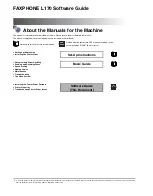
Defining the data for a custom report
72 Avaya CMS Custom Reports
!
Important:
You should not add table names to your custom calculations in the
Dictionary subsystem. Doing so makes the assigned calculation name less
flexible for use in custom reports. Also, if you append table names to the
Dictionary calculation and then also assign a table name to the calculation
name in the Field window, the report will fail.
Aggregate functions
An aggregate function is a prefix attached to a database item, a calculation, parts of a
calculation, or a calculation name. When you define an aggregate function, you must place
the database item or calculation in parentheses (as in:
max(dsplit.ACDTIME/dsplit.ACDCALLS)
).
Note:
In real-time reports, fields with aggregate functions cannot share a set of
row search conditions with non-aggregate fields. And for historical reports,
special considerations exist when you assign the same row search
conditions to both aggregate functions and other types of data expressions.
See
Repeating aggregate function values
on page 158.
An aggregate function can be one of four types. Each type retrieves a different value from
the data.
max
The max aggregate function retrieves the highest value for a calculation or database
item over the time frame of the report.
For example, if the Intrahour Split table contained data (as shown in the following
figure) and you entered
max(hsplit.ACDCALLS)
for a field in a report and then ran
the report for Split 1 for all intervals on 07/02/93, CMS would find all rows shown in
bold. However, CMS would display only the value 418 (shown in the box), which is the
maximum ACD calls in any single interval on 07/02/93. Likewise, if you entered
max(ACDTIME/ACDCALLS)
for the field, CMS would display the value 101.53 (which
is the highest average talk time in any single interval on 07/02/93).
















































